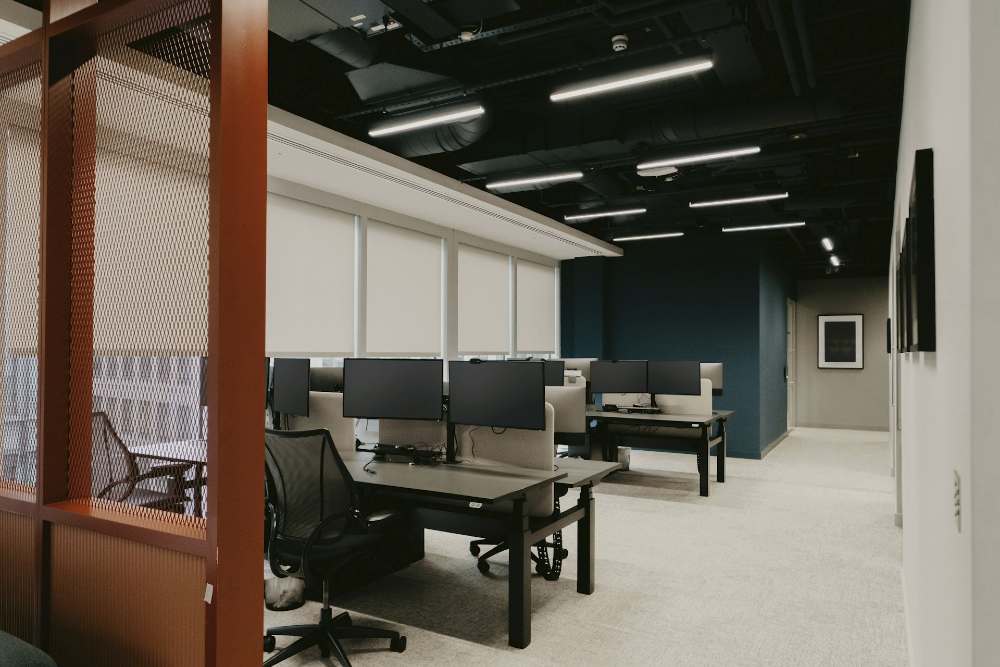Ever found yourself wincing after a day hunched over a wobbly desk or trying to ignore the creaks of an ancient office chair? We’ve all been there, and let’s be honest, it’s no fun. Investing in quality office furniture might seem like a hefty upfront cost, but have you ever considered the long-term payoffs? Let’s dive into why quality office furniture at an affordable price is a wise investment for your future.
The False Economy of Cheap Furniture
The Temptation of Low Prices
It’s tempting to cut corners and save a few bucks by choosing budget-friendly office furniture. However, like a mirage in the desert, the initial savings can evaporate, leaving you stranded with the hidden costs of frequent replacements and potential productivity dips.
The True Cost of “Saving”
- Durability – Cheap furniture often means compromised materials and construction, leading to a shorter lifespan.
- Ergonomics – Skimping on ergonomics can result in discomfort or even health issues, affecting work performance.
- Aesthetics – Low-quality furniture can quickly look worn out, affecting your workspace’s ambiance and your brand image.
The Smart Choice: Investing in Quality
Longevity and Durability
High-quality office furniture isn’t just built to last; it’s designed to endure the rigors of daily use with grace. This means fewer replacements, less waste, and ultimately, more savings.
Ergonomics: Your Health is an Investment
- Comfort – Quality chairs and desks offer better support, reducing strain and fatigue.
- Productivity – Comfortable employees are focused employees. The right furniture can boost efficiency and job satisfaction.
- Health Benefits – Good furniture can prevent long-term health issues, saving you from future medical costs.
Aesthetic and Morale Boost
- Professional Image – Elegant, well-made furniture elevates your office’s look, impressing clients and boosting your brand.
- Employee Morale – A well-designed, comfortable workspace shows employees they’re valued, fostering loyalty and motivation.
Practical Tips for Choosing the Right Furniture
Identifying Quality
- Materials – Look for durable materials like solid wood, metal, or high-grade plastics.
- Construction – Check for sturdy construction, attention to detail, and quality hardware.
- Warranty – A confident manufacturer will back their furniture with a robust warranty.
Ergonomics 101
- Adjustability – Chairs and desks should be adjustable to accommodate various body types and working styles.
- Support – Look for features that offer proper lumbar and wrist support.
- Trial Period – If possible, choose furniture that you can test out before committing.
The Bigger Picture: Sustainability and Ethical Choices
Environmental Impact
Investing in durable furniture not only saves you money in the long run but also reduces waste and conserves resources, contributing to a healthier planet.
Ethical Manufacturing
Choosing brands that prioritize ethical manufacturing practices supports fair labor and reduces your carbon footprint.
Embracing the Future: How Quality Office Furniture Adapts to Technology
Staying Ahead with Adaptive Design
In our fast-paced, tech-driven world, office furniture needs to be more than just a place to sit or a surface to work on. It needs to keep pace with technological advancements and evolving workplace dynamics. Quality office furniture is designed with the future in mind, offering adaptability and compatibility with emerging tech trends.
Integration and Innovation
- Tech-Friendly Features – Think integrated cable management systems, built-in power outlets, and wireless charging pads. These features ensure your furniture doesn’t just accommodate technology; it enhances it.
- Modular Designs – High-quality office pieces often come with the option to add, remove, or rearrange components. This modularity means your furniture can evolve alongside your business and technological needs.
- Remote Work Ready – As remote work becomes increasingly common, furniture that supports a seamless transition between office and home environments is invaluable. This includes portable and ergonomic solutions that cater to the modern, flexible workforce.
Investing in the Digital Age
- Future-Proofing – By choosing furniture that anticipates and adapts to future tech, you avoid the need for frequent replacements or makeshift solutions.
- Innovation at Work – Furniture that supports and enhances technology can foster innovation, enabling your team to leverage new tools and methods effectively.
- Aesthetic Consistency – Quality furniture designed with technology in mind ensures that your workspace doesn’t just function better; it looks cohesive and modern, reflecting a brand that’s forward-thinking and tech-savvy.
FAQ: Making Informed Choices
Q: How much should I budget for quality office furniture?
A: While it varies, investing about 10% of your total office setup budget in furniture can strike a good balance between cost and quality.
Q: Can quality furniture really impact productivity?
A: Absolutely. Comfortable, functional furniture can significantly reduce distractions and health-related absences, enhancing overall productivity.
Q: How do I know if a piece of furniture is ergonomically designed?
A: Look for features like adjustable height, adequate lumbar support, and a design that promotes a natural posture.
Conclusion
While the sticker shock of quality office furniture might make you hesitate, the benefits far outweigh the initial investment. From enhancing productivity and well-being to making a statement about your brand, the right furniture is a cornerstone of a successful workspace. So, next time you’re furniture shopping, remember: you’re not just buying a desk or a chair; you’re investing in your health, your team, and your future.





Leave a Reply
You must be logged in to post a comment.